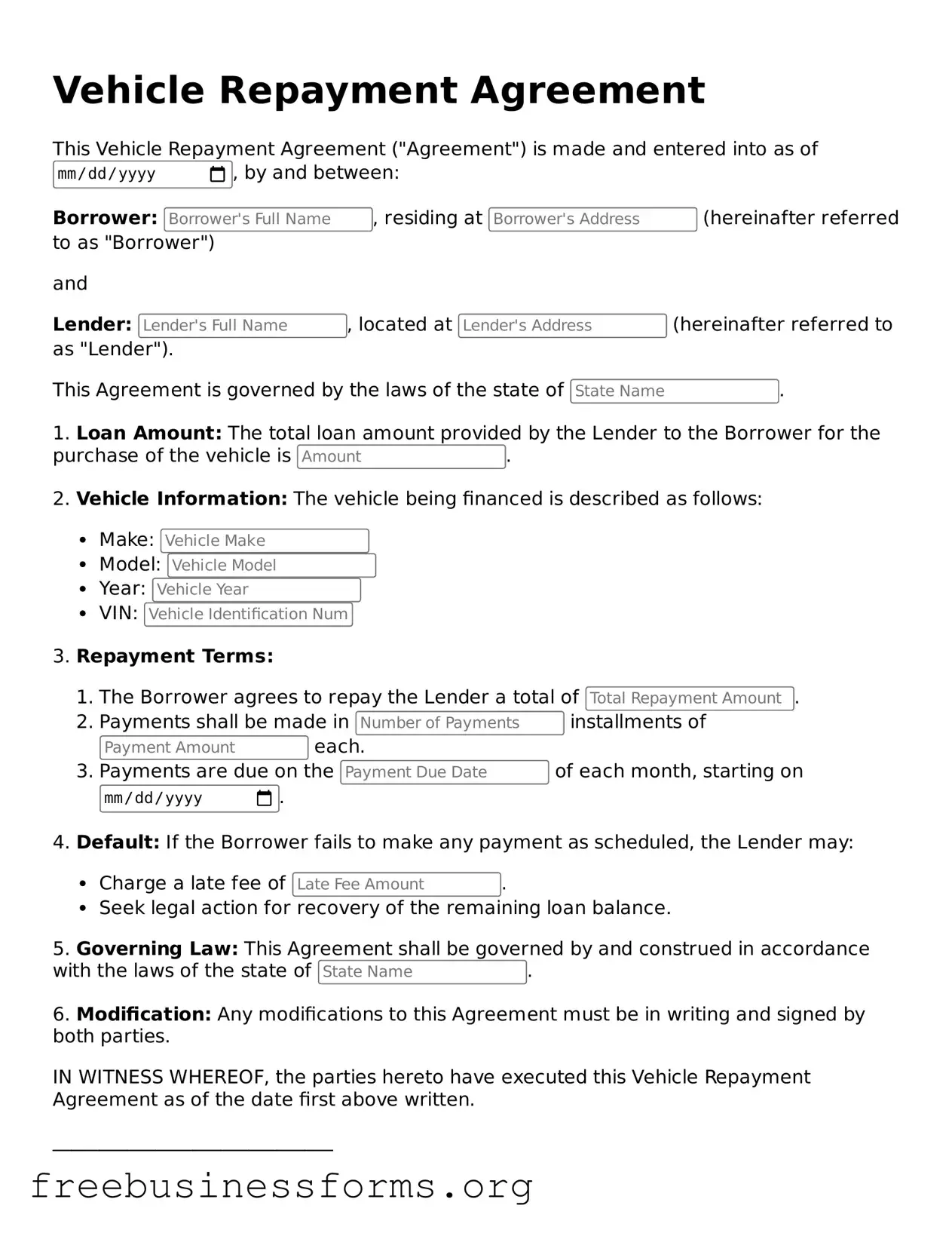Official Vehicle Repayment Agreement Form
The Vehicle Repayment Agreement form is a legal document that outlines the terms and conditions under which a borrower agrees to repay a loan taken out for a vehicle purchase. This agreement serves to protect both the lender and the borrower by clearly stating the repayment schedule, interest rates, and any penalties for late payments. Understanding this form is essential for anyone looking to finance a vehicle, as it lays the groundwork for a successful repayment process.
Open Form Here
